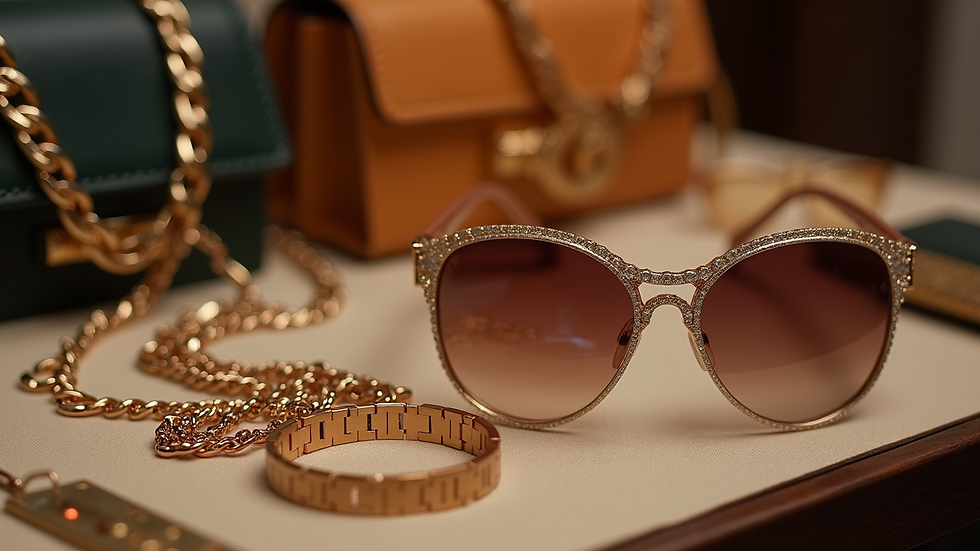The Business of Fashion and Its Relevance and the Role of Luxury Brands in Today's Generation
- Darjeeling Luvvies?
- Apr 2
- 3 min read
Updated: 5 days ago
Fashion is not just about clothes; it's a living expression of culture, artistry, and personal identity. As the younger generation voices their preferences and values, we need to ask: does fashion still resonate with them? Are traditional luxury brands losing their significance? This post will explore these questions, aiming to shed light on the relevance of fashion and the evolving role of luxury brands in today’s society.
The Changing Landscape of Fashion
Fashion is changing rapidly, influenced by tech advancements, cultural movements, and societal shifts. In the 1980s and 1990s, fashion celebrated bold colours and extravagance. Today, minimalism and sustainability reign as key themes. For example, in a survey by McKinsey & Company, 67% of young consumers stated that sustainability influences their purchasing decisions significantly.
Young audiences are distancing themselves from traditional fashion rules and gravitating toward brands that embody uniqueness, sustainability, and inclusivity. Rather than aspiring to luxury labels known for exclusivity, many prioritize ethical fashion. This indicates that luxury brands might struggle to stay relevant as this new demographic embraces broader values.
Fashion Perception Among the Youth
To many in today's youth, fashion transcends traditional clothing; it is a vital form of self-expression. The rise of thrift stores and second-hand shopping illustrates this trend. For instance, a Nielsen report found that 55% of Gen Z prefers buying items that reflect their personal style, often seeking out vintage or unique pieces over mass-produced luxury items.
The younger generation seeks authentic connections with their attire. This perspective shifts away from viewing luxury brands as status symbols toward valuing the story and impact behind a garment. Rather than dismissing the fashion industry as irrelevant, it’s worth noting its ongoing cultural place and its potential for creativity.

The Relevance of Luxury Brands
Despite perceptions of waning interest, luxury brands are adapting in response to younger audiences. Many high-fashion labels, such as Gucci and Prada, are increasingly incorporating sustainable practices. For example, Gucci’s “Off the Grid” collection focuses on recycled materials, demonstrating a commitment to environmental responsibility while appealing to younger shoppers.
Collaborations between luxury brands and streetwear, such as the partnership between Louis Vuitton and Nike, exemplify how the industry can blend traditional luxury with youth culture. According to Statista, the luxury goods market is projected to reach $1.2 trillion by 2025, indicating that despite shifting preferences, there remains strong consumer interest in luxury fashion.
Luxury brands may have lost some of their magnetic pull, but they still engage consumers through craftsmanship, history, and quality.

The Need for Young Blood in Design
The heart of the issue may lie in the creative direction of fashion. Introducing younger designers into established fashion houses can foster innovation and bring fresh perspectives, ensuring that luxury brands resonate more deeply with today’s consumers.
By embracing younger talent, brands can create fashion that reflects a blend of artisanal craftsmanship and contemporary relevance. Young designers often prioritize transparency and sustainability, aspects that resonate well with modern shoppers.
Fashion houses must listen to youth's voices, as this could not only reinvigorate their creative direction but also enhance their connection to a generation looking for more than just a label.
A Fresh Perspective on Fashion
The ongoing conversation about fashion’s relevance is multifaceted. While some luxury brands may appear detached from youth values, many are actively adjusting to reconnect with this demographic. The industry's evolution is characterized by the search for authenticity and a commitment to positive impact.
As the landscape of fashion changes, let’s not forget that it serves as a form of personal expression. By incorporating sustainable practices and prioritizing inclusivity, the fashion world can stay vibrant and meaningful.

Комментарии